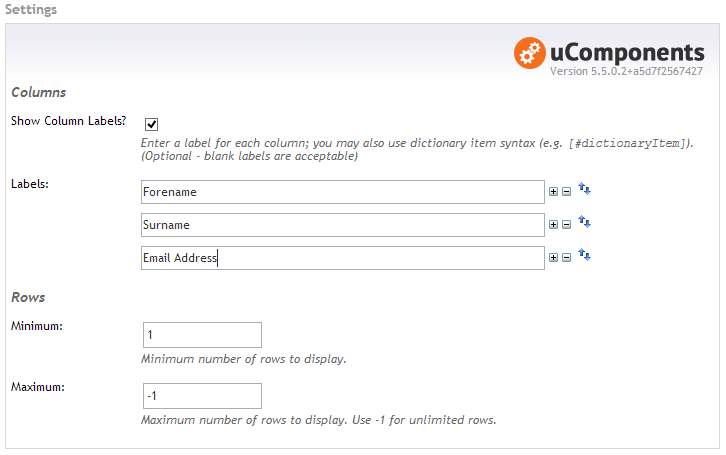
The Textstring Array data-type enables a content editor to make a list of multiple text items. For best use with data structures like key/value-pairs, tuples, etc.
Created in v3.0.0The data-type has the following configuration options:

[#dictionaryItem]). (Optional - blank labels are acceptable)-1 for unlimited rows.
<TextstringArray>
<values>
<value>hello</value>
<value>world</value>
</values>
<values>
<value>foo bar</value>
<value>world</value>
</values>
</TextstringArray>
With the Razor model-binding enabled, the property will automatically be converted to the appropriate .NET object type.
In the case of TextstringArray, the object type is a List<string[]> (e.g. a list of string arrays):
@inherits umbraco.MacroEngines.DynamicNodeContext
<table>
@foreach (string[] row in Model.textstringArrayPropertyAlias)
{
<tr>
@foreach (var cell in row)
{
<td>@cell</td>
}
</tr>
}
</table>
<xsl:for-each select="*/TextstringArray/values">
<strong><xsl:value-of select="value[1]" /></strong>
<xsl:value-of select="value[2]" />
</xsl:for-each>